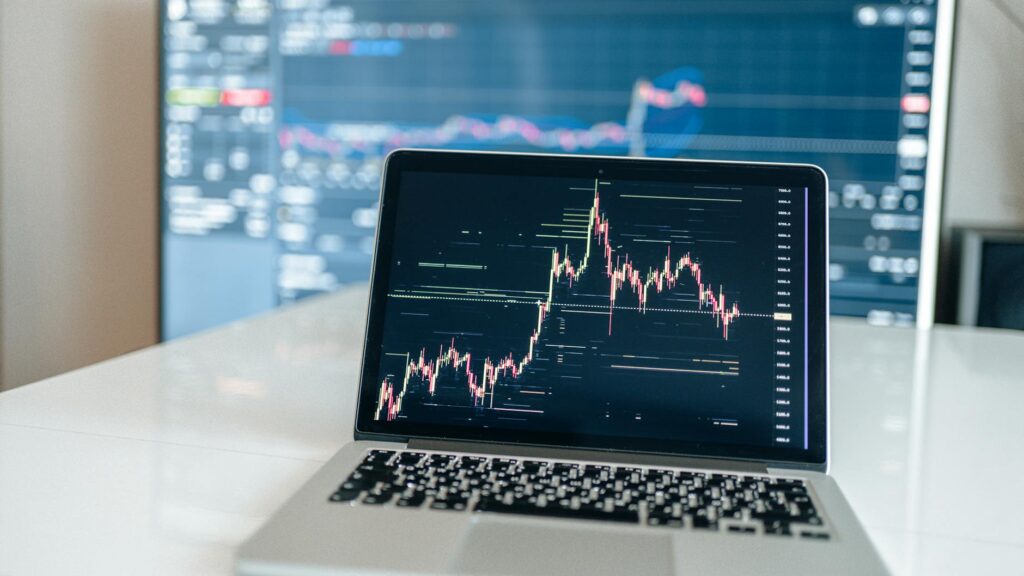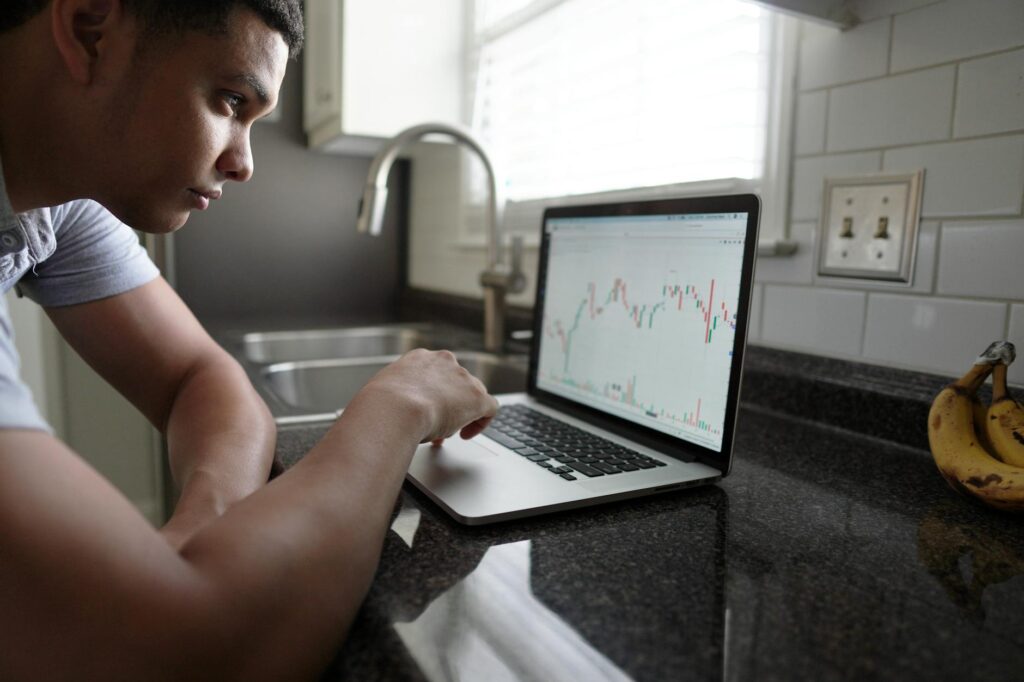You’ve Got a Trading Idea. Is It a Genius Move or a Disaster Waiting to Happen?
Let’s be real. Every trader, from the wide-eyed beginner to the seasoned pro, gets that spark. That flash of insight. A new indicator combination, a pattern nobody else seems to see, a gut feeling about market mechanics. You think, “This is it. This is the one.” But here’s the million-dollar question: How do you know? How do you separate a genuinely profitable edge from pure, unadulterated hope? You don’t find out by throwing your hard-earned money at it and crossing your fingers. That’s gambling, not trading. The answer, the professional’s answer, is to backtest your trading strategy. It’s the closest thing we have to a time machine, allowing you to see how your brilliant idea would have performed in the past, without risking a single cent.
Think of it as a stress test. A simulator. A dress rehearsal before the big show. Before you put your capital on the line, you put your strategy on the line. This article isn’t just a boring definition; it’s your complete guide to doing it right. We’re going to walk through what backtesting is, why it’s non-negotiable, the different ways to do it, and most importantly, how to avoid the common traps that give traders a false sense of confidence. So, grab a coffee and let’s get to work.
Key Takeaways
- What is Backtesting? It’s the process of applying a set of trading rules to historical market data to see how the strategy would have performed in the past.
- Why is it Crucial? Backtesting validates your strategy’s potential, helps you understand its risk profile, and builds the discipline needed for live trading. It’s about data, not drama.
- Manual vs. Automated: We’ll cover both methods – the hands-on approach of manual backtesting and the speed and power of automated software.
- Key Metrics Matter: It’s not just about profit. We’ll explore metrics like win rate, profit factor, and maximum drawdown that tell the whole story.
- Avoid Common Pitfalls: Overfitting, lookahead bias, and ignoring costs can kill a strategy. We’ll show you how to spot and avoid them.
So, What Exactly *Is* Backtesting?
At its core, backtesting is a simulation. It’s a method where you take a precise, non-discretionary set of trading rules—your strategy—and apply them to a historical dataset of a particular asset, like Bitcoin’s price history over the last five years. You meticulously record every hypothetical trade the strategy would have triggered: the entry point, the exit point, the stop loss, and the take profit. You do this over and over, for hundreds or even thousands of data points, to generate a track record.

The goal is to generate performance statistics. How much money would it have made? Or lost? What was the biggest losing streak? How often was it right? This data gives you an objective, evidence-based look at your strategy’s viability. It moves your idea from the realm of “I think this will work” to “The data suggests this has worked in the past under these specific conditions.” And that, my friend, is a world of difference.
Why Bother? The Unvarnished Truth About Skipping This Step
Some traders, especially new ones, get impatient. They want action. They see a few successful chart examples and assume it’ll always work that way. This is a catastrophic mistake. Here’s why backtesting is not just a ‘nice-to-have’ but an absolute necessity:
- Objective Validation: Your emotions, hopes, and biases have no place in strategy development. Backtesting is cold, hard math. It tells you if there’s a statistical edge or if you’re just getting lucky.
- Risk Understanding: A strategy might be profitable overall, but can you stomach a 40% drawdown? Backtesting reveals the ugly side—the losing streaks, the drawdowns, the periods of stagnation. It prepares you mentally for the reality of trading.
- Strategy Refinement: Your initial idea is rarely perfect. Backtesting allows you to tweak parameters. What if I used a 50-period moving average instead of a 20? What if my stop loss was 2% instead of 1%? You can optimize and refine in a safe environment.
- Confidence and Discipline: Trading a live account is psychologically taxing. When a tested strategy hits a losing streak (and they all do), having backtested data to fall back on gives you the confidence to stick to the plan. Without it, you’re more likely to panic and abandon your rules at the worst possible time.
The Two Core Methods: Manual vs. Automated
There are two main ways to approach backtesting, each with its own set of pros and cons. There’s no single ‘best’ way; it often depends on the complexity of your strategy and your technical skills.
Manual Backtesting: The Old-School Grind
This is exactly what it sounds like. You, a chart, and a spreadsheet. You manually scroll back in time on your charting platform, bar by bar, as if it were happening in real-time. You look for your setup. When you see it, you pause, record the entry price, your stop loss, and your take profit in your spreadsheet. Then you scroll forward, bar by bar, until one of those levels is hit. You record the result and repeat. And repeat. And repeat.
Pros:
- Deep Market Intuition: This process forces you to internalize your strategy’s behavior and the market’s flow. You’ll develop a ‘feel’ for price action that you simply can’t get from an automated report.
- No Coding Required: It’s accessible to everyone. If you can use a chart and a spreadsheet, you can do this.
- Good for Discretionary Elements: If your strategy involves some level of discretion (e.g., assessing the ‘strength’ of a trend), manual testing is the only way to simulate it.
Cons:
- Insanely Time-Consuming: Testing a single strategy on one timeframe over a few years can take dozens of hours. It’s a serious commitment.
- Prone to Human Error: It’s easy to make mistakes in your spreadsheet, miss a trade, or subconsciously cheat by peeking ahead. Honesty with yourself is paramount.
- Limited Scope: Because it’s so slow, you can’t test a huge number of variations or assets.
Automated Backtesting: The Power of Code
Automated backtesting uses software or custom scripts (often in languages like Python or specialized platform languages like Pine Script for TradingView) to run your strategy against historical data automatically. You code the exact rules of your strategy, and the computer does the heavy lifting, executing thousands of trades in seconds or minutes.
Pros:
- Blazing Speed: You can test years of data across multiple assets in the time it takes to make a cup of tea. This allows for rapid iteration and optimization.
- Objective and Error-Free: The code does exactly what you tell it to. There’s no emotion, no accidental cheating, and no calculation errors (assuming your code is correct).
- Scalability: Easily test hundreds of variations of a strategy to find the most robust parameters.
Cons:
- Requires Technical Skills: You either need to learn to code or use platforms with user-friendly strategy builders. This can be a steep learning curve.
- Garbage In, Garbage Out: A small error in your code can produce completely misleading results. The logic must be flawless.
- The ‘Black Box’ Risk: It can be tempting to just look at the final profit number without understanding *why* the strategy behaved the way it did. You can lose the market intuition gained from manual testing.

A Step-by-Step Guide to Backtest Your Trading Strategy
Ready to get your hands dirty? Here’s a framework you can follow, whether you’re going the manual or automated route.
Step 1: Define Your Strategy with Brutal Honesty
This is the most critical step. Your strategy cannot have any ambiguity. You must define every single rule with mechanical precision. Ask yourself:
- What is my exact entry trigger? (e.g., “When the 20 EMA crosses above the 50 EMA AND the RSI is above 50.”)
- What is my exact stop-loss placement? (e.g., “Place the stop loss 1 ATR (Average True Range) below the entry candle’s low.”)
- What is my exact exit rule/take profit? (e.g., “Exit when the price touches the upper Bollinger Band, or when the 20 EMA crosses back below the 50 EMA.”)
- What is my position sizing? (e.g., “Risk exactly 1% of the account balance on every trade.”)
If you can’t write it down as a simple, unbreakable set of ‘if-then’ statements, your strategy isn’t ready for testing.
Step 2: Get Your Hands on Quality Historical Data
Your backtest is only as good as the data you feed it. For most retail traders using platforms like TradingView, MetaTrader, or Thinkorswim, the data provided is usually sufficient for swing or day trading strategies. If you’re a high-frequency trader, you’ll need specialized tick data. Ensure the data is clean (free of errors) and covers various market conditions—bull markets, bear markets, and sideways chop.
Step 3: Choose Your Weapon: The Backtesting Environment
Based on your chosen method:
- Manual: Your setup is your charting platform (like TradingView with its ‘Bar Replay’ feature) and a spreadsheet (Google Sheets or Excel).
- Automated: This could be built-in tools like TradingView’s ‘Strategy Tester’, platforms like ProRealTime, or custom solutions you code yourself in Python using libraries like `backtrader` or `zipline`.
Step 4: Run the Test (and Be Patient)
Execute the plan. If you’re doing it manually, this is where the grind begins. Stay disciplined. Don’t skip trades because they ‘look bad’. Follow your rules to the letter. If automated, you’ll configure your script or software and let it run. It’s crucial to test over a long enough period to be statistically significant—at least 100 trades is a good starting point.
Step 5: Analyze the Results – The Moment of Truth
Once the test is complete, you’ll have a log of trades. Now you need to turn that raw data into meaningful insights. Calculate the key performance metrics (we’ll dive deeper into these next). Look at the equity curve—is it a smooth upward slope or a terrifying rollercoaster? Identify the periods of the biggest drawdowns. What market conditions caused them? This analysis is where the real learning happens.
Interpreting Your Backtest Results: Key Metrics to Watch
A big ‘Total Profit’ number looks great, but it’s just one piece of the puzzle. A professional trader analyzes the performance from multiple angles to understand the strategy’s true character.

- Total Net Profit: The obvious one. Is the strategy profitable after all wins and losses?
- Profit Factor: Gross profit divided by gross loss. A value above 1 means it’s profitable. Anything above 1.5 is decent, and above 2 is generally considered very good.
- Win Rate (% of Profitable Trades): The percentage of trades that were winners. Don’t be fooled; a high win rate doesn’t guarantee profitability if the losses are huge. A 40% win rate can be extremely profitable if the wins are much larger than the losses.
- Average Win / Average Loss (Risk/Reward Ratio): This tells you how much bigger your average winning trade is compared to your average losing trade. A ratio of 2:1 means your winners are, on average, twice the size of your losers.
- Maximum Drawdown: This is critical. It’s the largest peak-to-trough drop in your account equity during the test. It represents the worst losing streak you would have had to endure. Can you psychologically handle a 30% drawdown? This metric tells you if you can.
- Sharpe Ratio: A more advanced metric that measures risk-adjusted return. A higher Sharpe ratio is better, as it indicates you’re getting more return for the amount of risk you’re taking on.
A key insight: Focus more on the Maximum Drawdown and Profit Factor than on the Win Rate. A strategy that makes millions but has a 70% drawdown will likely cause you to go broke or quit before you ever see those profits. A robust strategy is one you can actually stick with through the tough times.
The Hidden Dangers: Common Backtesting Pitfalls to Avoid
Backtesting can give you a false sense of security if not done correctly. Be aware of these common, and often subtle, traps.
Overfitting: The Curve-Fitting Trap
This is the number one sin of backtesting. Overfitting happens when you tweak your strategy’s parameters so much that it perfectly fits the historical data you’re testing it on. It looks incredible in the backtest but falls apart in live trading because it was tailored to the past’s specific noise, not a genuine market edge. How to avoid it: Keep your rules simple. Test your strategy on ‘out-of-sample’ data—a period of time that you didn’t use to build or optimize the rules.
Lookahead Bias: Cheating Without Realizing It
This is a subtle but deadly error, more common in poorly coded automated tests. It occurs when your simulation uses information that wouldn’t have been available at the time of the trade. For example, using the closing price of a candle to make a decision at the open of that same candle. You’re accidentally seeing the future. How to avoid it: Ensure your code or manual process only uses data that was historically available at the moment of decision.
Ignoring Costs: The Silent Killer
Your backtest might show a small profit, but you’ve forgotten to account for real-world costs. Commissions, fees, and slippage (the difference between your expected entry price and the actual fill price) can turn a marginally profitable strategy into a consistent loser. How to avoid it: Always factor in a conservative estimate for commissions and slippage into every single trade in your backtest. This gives you a much more realistic picture of net performance.
Conclusion
Backtesting isn’t a magic crystal ball that guarantees future profits. The market is always evolving, and past performance is not a perfect predictor of future results. However, it is an indispensable tool in a professional trader’s arsenal. It’s the process of replacing hope with evidence, of building a business plan for your trading, and of understanding the true nature of the edge you’re trying to exploit.
Skipping this step is like trying to build a skyscraper without a blueprint. It might look okay for a little while, but it’s destined for a catastrophic collapse. Take the time. Do the work. Test your ideas rigorously. Your trading account will thank you for it.
FAQ
How many trades do I need for a backtest to be reliable?
There’s no magic number, but a common rule of thumb is to aim for at least 100 trades. This provides a large enough sample size to give you statistically relevant metrics. For higher-frequency strategies, you might want several hundred or even thousands of trades to be confident in the results.
Can I backtest a strategy that is not 100% mechanical?
It’s much harder, but yes. This is where manual backtesting shines. If your strategy includes a discretionary element, like “only take trades if the trend looks strong,” you must be brutally honest and consistent in your application of that subjective rule during the manual backtest. Keep a detailed journal of *why* you made each discretionary decision to ensure you’re not fooling yourself.
My backtest looks amazing, should I go live with real money immediately?
Hold your horses! After a successful backtest, the next recommended step is forward testing or paper trading. This means trading your strategy in a live market with a demo account for a period of time (e.g., a few months). This confirms that your strategy works in current market conditions and that your backtest didn’t have any hidden flaws. It’s the final check before risking real capital.


